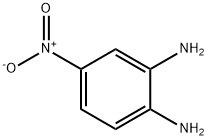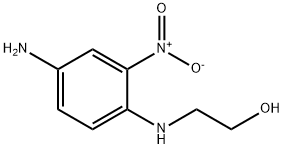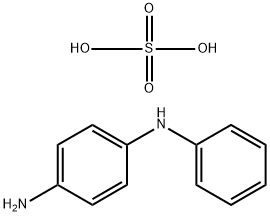4-Hydroxyaniline hydrochloride
Synonym(s):4-Aminophenol hydrochloride;4-Aminophenol hydrochloride, 4-Hydroxyaniline hydrochloride;4-Hydroxyaniline hydrochloride;4-Hydroxyanilinium chloride
- CAS NO.:51-78-5
- Empirical Formula: C6H8ClNO
- Molecular Weight: 145.59
- MDL number: MFCD00012996
- EINECS: 200-122-6
- SAFETY DATA SHEET (SDS)
- Update Date: 2024-12-18 14:08:57

What is 4-Hydroxyaniline hydrochloride?
Chemical properties
Off white powder
The Uses of 4-Hydroxyaniline hydrochloride
4-Aminophenol may be used as a pharmaceutical reference standard for the determination of the analyte in pharmaceutical formulations using surface enhanced Raman scattering method.
General Description
Pharmaceutical secondary standards for application in quality control, provide pharma laboratories and manufacturers with a convenient and cost-effective alternative to the preparation of in-house working standards. 4-Aminophenol hydrochloride can be used to study cell biology, bioactive small molecules, chemical synthesis, organic building blocks, oxygen compounds and phenols.
Safety Profile
Moderately toxic byintraperitoneal route. Mutation data reported. Whenheated to decomposition it emits very toxic fumes of HCland NOx.
Purification Methods
Purify the salt by treating an aqueous solution with saturated Na2S2O3, filtering under N2, then recrystallising it from 50% EtOH twice and once from absolute EtOH [Livingston & Ke J Am Chem Soc 72 909 1950]. [Beilstein 13 III 993.]
Properties of 4-Hydroxyaniline hydrochloride
| Melting point: | 302 °C |
| Boiling point: | 306°C (decomp) |
| storage temp. | Store below +30°C. |
| solubility | DMSO (Slightly), Methanol (Slightly) |
| form | powder |
| color | gray |
| Water Solubility | soluble |
| Merck | 14,462 |
| BRN | 3911747 |
| Stability: | Stable, but hygroscopic, air and light sensitive. Incompatible with strong oxidizing agents. |
| CAS DataBase Reference | 51-78-5(CAS DataBase Reference) |
| EPA Substance Registry System | 4-Aminophenol hydrochloride (51-78-5) |
Safety information for 4-Hydroxyaniline hydrochloride
| Signal word | Danger |
| Pictogram(s) |
 Corrosion Corrosives GHS05  Skull and Crossbones Acute Toxicity GHS06  Health Hazard GHS08  Environment GHS09 |
| GHS Hazard Statements |
H317:Sensitisation, Skin H318:Serious eye damage/eye irritation H341:Germ cell mutagenicity H351:Carcinogenicity H372:Specific target organ toxicity, repeated exposure H400:Hazardous to the aquatic environment, acute hazard |
| Precautionary Statement Codes |
P201:Obtain special instructions before use. P273:Avoid release to the environment. P280:Wear protective gloves/protective clothing/eye protection/face protection. |
Computed Descriptors for 4-Hydroxyaniline hydrochloride
4-Hydroxyaniline hydrochloride manufacturer
ALS INDIA LIFE SCIENCES
Anand Agencies
ASM Organics
New Products
(S)-3-Aminobutanenitrile hydrochloride 4-Methylphenylacetic acid N-Boc-D-alaninol N-BOC-D/L-ALANINOL Tert-butyl bis(2-chloroethyl)carbamate 3-Morpholino-1-(4-nitrophenyl)-5,6-dihydropyridin- 2(1H)-one Furan-2,5-Dicarboxylic Acid Tropic acid 1-Bromo-3,5-Di-Tert-Butylbenzene S-2-CHLORO PROPIONIC ACID ETHYL ISOCYANOACETATE 2-Bromo-1,3-Bis(Dimethylamino)Trimethinium Hexafluorophosphate 4-IODO BENZOIC ACID 3-NITRO-2-METHYL ANILINE 1-(2,4-DICHLOROPHENYL) ETHANAMINE (2-Hydroxyphenyl)acetonitrile 4-Bromopyrazole 2-(Cyanocyclohexyl)acetic acid 4-methoxy-3,5-dinitropyridine 1-(4-(aminomethyl)benzyl)urea hydrochloride 2-aminopropyl benzoate hydrochloride diethyl 2-(2-((tertbutoxycarbonyl)amino) ethyl)malonate tert-butyl 4- (ureidomethyl)benzylcarbamate Ethyl-2-chloro((4-methoxyphenyl)hydrazono)acetateRelated products of tetrahydrofuran
![4-[1-(hydroxyamino)ethylidene]cyclohexa-2,5-dien-1-one](https://img.chemicalbook.in/CAS/GIF/34523-34-7.gif)







You may like
-
 51-78-5 4-Aminophenol hydrochloride 98%View Details
51-78-5 4-Aminophenol hydrochloride 98%View Details
51-78-5 -
 4-Aminophenol Hydrochloride CAS 51-78-5View Details
4-Aminophenol Hydrochloride CAS 51-78-5View Details
51-78-5 -
 4-Hydroxyanilinium chloride CAS 51-78-5View Details
4-Hydroxyanilinium chloride CAS 51-78-5View Details
51-78-5 -
 4-Aminophenol hydrochloride CAS 51-78-5View Details
4-Aminophenol hydrochloride CAS 51-78-5View Details
51-78-5 -
 1975-50-4 98%View Details
1975-50-4 98%View Details
1975-50-4 -
 2-HYDROXY BENZYL ALCOHOL 98%View Details
2-HYDROXY BENZYL ALCOHOL 98%View Details
90-01-7 -
 14714-50-2 (2-Hydroxyphenyl)acetonitrile 98+View Details
14714-50-2 (2-Hydroxyphenyl)acetonitrile 98+View Details
14714-50-2 -
 118753-70-1 98+View Details
118753-70-1 98+View Details
118753-70-1